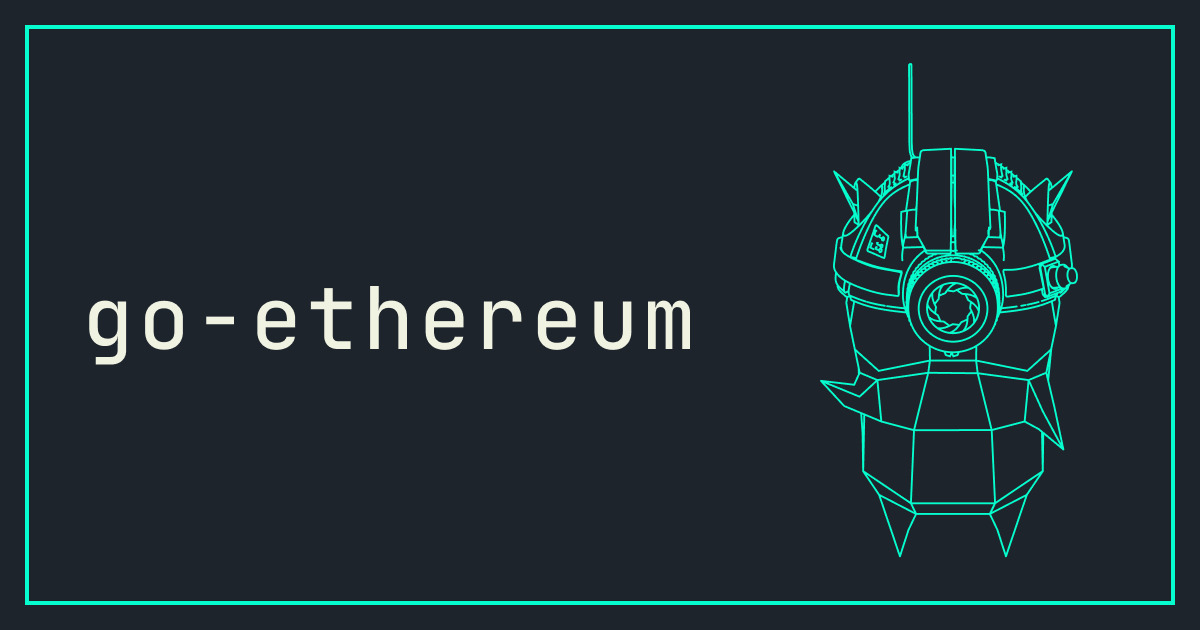Introduction
Welcome to the world of Ethereum! If you’re looking to dive into the fascinating realm of blockchain technology, running an Ethereum node is an essential step to get started. In this guide, we will walk you through the process of setting up and running your very own Ethereum node.
But first, let’s understand what exactly an Ethereum node is. In the Ethereum network, nodes play a crucial role in maintaining the blockchain. They act as individual computers that participate in the network, store a copy of the entire blockchain, verify and validate transactions, and contribute to the overall security and decentralization of the network.
Running an Ethereum node provides you with several benefits. Firstly, by running a node, you become an active participant in the Ethereum network, contributing to its decentralization and overall resilience. Secondly, you gain direct access to the Ethereum blockchain, giving you the ability to verify transactions and interact with the decentralized applications (DApps) built on Ethereum. Finally, running a node also allows you to have a deeper understanding of Ethereum’s inner workings and be part of the vibrant Ethereum community.
In this comprehensive guide, we will cover everything you need to know to set up, configure, and run an Ethereum node. We will walk you through the process step by step, ensuring that even if you’re new to the world of blockchain technology, you can follow along easily.
Before we begin, it’s essential to note that running an Ethereum node requires some technical knowledge and computing resources. You’ll need a computer with sufficient storage space and processing power to handle the blockchain’s size and the computational requirements of a node. Additionally, a stable internet connection is crucial to ensure your node remains connected to the Ethereum network.
Now that we have a basic understanding of what an Ethereum node is and the benefits it offers, let’s dive into the process of setting up the environment required to run an Ethereum node. So, without further ado, let’s get started on this exhilarating journey into the world of Ethereum!
Setting up the Environment
Before we dive into installing and configuring the Ethereum node software, we need to ensure that our environment is properly set up. Follow these steps to prepare your computer:
- Check System Requirements: Ensure that your computer meets the minimum system requirements to run an Ethereum node. This typically includes a multi-core processor, sufficient RAM (at least 8GB), and ample storage space (at least 250GB).
- Ensure Stable Internet Connection: Running an Ethereum node requires a stable and reliable internet connection. Make sure you have a high-speed internet connection that can handle the data transfer and synchronization process without interruptions.
- Install Latest Updates: Update your computer’s operating system and all software to the latest versions. This ensures that you have the latest security patches and bug fixes, providing a stable environment for running the node.
Once you have taken care of these preparatory steps, you are ready to proceed to the next stage – installing the Ethereum node software. There are several software options available for running an Ethereum node, including Geth, Parity, and OpenEthereum. In this guide, we will focus on Geth, which is the Go implementation of the Ethereum protocol and the most widely used Ethereum client.
Installing Geth is relatively straightforward, regardless of your operating system. Simply follow the steps below:
- Visit the Geth GitHub Repository: Go to the official GitHub repository of Geth, which can be found at https://github.com/ethereum/go-ethereum.
- Choose the Right Version: Select the appropriate version of Geth based on your operating system (Windows, macOS, or Linux). Ensure that you download the stable release for a reliable and stable experience.
- Download and Extract: Download the Geth executable file and extract it to a location on your computer where you want to store the Ethereum node software.
- Add Geth to System Path: To run Geth from any directory in your terminal or command prompt, you need to add it to your system’s PATH environment variable. Instructions on how to do this can be found in the Geth documentation specific to your operating system.
Congratulations! You have successfully installed Geth on your computer. Now, we need to configure the Ethereum node to ensure its smooth operation and connectivity with the Ethereum network. This will be covered in the next section.
Installing Ethereum Node Software
Now that our environment is set up, it’s time to install the Ethereum node software. As mentioned earlier, we will focus on Geth, one of the most commonly used Ethereum clients. Here’s how you can install Geth on your computer:
- Head to the Geth GitHub Repository: Visit the official GitHub repository of Geth at https://github.com/ethereum/go-ethereum.
- Select the Right Version: Choose the appropriate Geth version based on your operating system (Windows, macOS, or Linux).
- Download the Installer: Click on the download link for your operating system and download the installer file (e.g., .msi for Windows, .pkg for macOS, or .tar.gz for Linux).
- Run the Installer: Once the download is complete, run the installer file and follow the installation instructions provided. Be sure to read through the installation options and choose the ones that best suit your preferences.
- Confirm Successful Installation: After the installation is complete, open a terminal or command prompt and execute the following command to check if Geth is installed properly:
geth version. This command should display the version number of Geth if the installation was successful.
That’s it! You have now successfully installed the Ethereum node software (Geth) on your computer. Next, we need to configure the Ethereum node to ensure its proper functioning. We will cover the configuration process in the next section.
It’s worth mentioning that there are alternative Ethereum clients available, such as Parity and OpenEthereum, each with its own installation process. If you choose to use a different client, refer to their respective documentation for installation instructions specific to your operating system.
Now that you have your Ethereum node software installed, let’s move on to configuring the node to connect it with the Ethereum network.
Configuring Ethereum Node
After successfully installing the Ethereum node software, it’s time to configure your Ethereum node to connect it to the Ethereum network. Configuration settings help customize the behavior of your node and define its network connectivity parameters. Here’s how you can configure your Ethereum node:
- Create a Data Directory: Start by creating a directory where your Ethereum node data will be stored. This directory will contain all the necessary files for your node to function.
- Specify Network Type: Determine the network you want your Ethereum node to connect to. The options include the main Ethereum network (often referred to as the “mainnet”), test networks like Ropsten or Rinkeby, or private networks.
- Select Sync Mode: Choose the sync mode for your Ethereum node. The most common options are “fast” and “full.” Fast syncing allows your node to sync more quickly by skipping certain validation checks, while full syncing ensures the complete validation of all historical blocks.
- Set RPC API: Decide whether you want to enable the JSON-RPC API. This allows you to interact programmatically with your Ethereum node and build applications on top of it. Enable or disable this feature based on your requirements.
- Configure Network Connectivity: Specify the port on which your Ethereum node will listen for incoming connections. Also, consider configuring firewall rules to allow incoming connections on that port, ensuring proper network connectivity.
- Enable Peer Discovery: Enable or disable peer discovery, which allows your node to automatically connect to and communicate with other Ethereum nodes. Enabling this feature ensures your node stays connected to the network’s peer-to-peer network.
- Set Ethereum Account(s): Create and specify Ethereum accounts that your node will manage. These accounts will have their own addresses and private keys, allowing you to send and receive Ether and interact with smart contracts.
To configure your Ethereum node, you need to create a configuration file with the desired settings. The specific steps for configuring your node depend on the client you’re using. For Geth, you can create a file named geth.toml or geth.yaml and specify the settings there. Refer to the documentation of your chosen client for detailed instructions on configuring your Ethereum node.
Once you have configured your Ethereum node, you’re ready to synchronize it with the Ethereum network. Synchronization is a critical step that allows your node to download and verify all the blocks and transactions in the blockchain. We will cover the synchronization process in the next section.
Configuring your Ethereum node properly ensures its seamless operation and integration with the Ethereum network. Take your time to adjust the configuration settings according to your needs and continue your Ethereum journey with a fully customized node!
Synchronizing with the Ethereum Network
Now that you have successfully configured your Ethereum node, it’s time to synchronize it with the Ethereum network. Synchronization is the process of downloading and verifying all the blocks and transactions in the blockchain, ensuring that your node is up to date with the latest data. Here’s how you can synchronize your Ethereum node:
- Open a Terminal or Command Prompt: Launch a terminal or command prompt window and navigate to the directory where you have installed the Ethereum node software.
- Start the Ethereum Node: Run the command specific to your client to start the Ethereum node. For example, if you’re using Geth, you would run
gethfollowed by any additional flags or options you want to specify. - Syncing Process: Your Ethereum node will now begin the synchronization process. This involves downloading and validating each block in the blockchain from the network. Depending on the sync mode you selected during configuration, the process can take some time.
- Monitor Progress: While the synchronization is in progress, you can monitor its status using various commands specific to your Ethereum client. These commands allow you to check the block number, the number of peers your node is connected to, and the synchronization progress.
- Wait for Full Sync: If you selected the “full” sync mode, your node will synchronize all the blocks from the beginning of the blockchain. This process may take several hours or even days, depending on the speed of your internet connection and the specifications of your computer.
- Fast Sync Option: Alternatively, if you chose the “fast” sync mode, your node will sync much quicker by skipping certain validation checks. While this reduces synchronization time, it may compromise some security guarantees.
It’s important to note that synchronizing a new Ethereum node from scratch can be a resource-intensive task. Ensure that your computer remains powered on and connected to the internet to complete the synchronization process uninterrupted.
Once your Ethereum node has finished synchronizing with the network, it will be up to date with the latest blocks and transactions. You can now fully explore the Ethereum network, interact with decentralized applications (DApps), send and receive Ether, and even deploy and execute smart contracts.
In the next section, we will dive into the practical aspect of running an Ethereum node and interacting with the Ethereum network. Get ready to unleash the true power of Ethereum with your very own Ethereum node!
Running an Ethereum Node
Now that your Ethereum node is fully synchronized with the Ethereum network, it’s time to explore the exciting possibilities that running a node provides. Running an Ethereum node allows you to participate fully in the Ethereum ecosystem and interact with the blockchain. Here’s how you can leverage the capabilities of your Ethereum node:
- Interact with the Ethereum Network: With your Ethereum node up and running, you can now connect to the Ethereum network and access the blockchain. Using tools like the Ethereum JSON-RPC API or specialized libraries, you can interact programmatically with the Ethereum network, send transactions, retrieve blockchain data, and even deploy and execute smart contracts.
- Manage Ethereum Accounts: Your Ethereum node allows you to create and manage multiple Ethereum accounts. Each account has its public and private key pair, which can be used for sending and receiving Ether, interacting with smart contracts, and participating in decentralized finance (DeFi) applications.
- Explore DApps and DeFi Applications: As an Ethereum node operator, you have direct access to the vast ecosystem of decentralized applications (DApps) built on Ethereum. Explore and use various DApps encompassing domains such as finance, gaming, art, and more. Participate in decentralized exchanges (DEXs), lending platforms, or yield farming protocols, all while leveraging the security and privacy provided by your self-hosted node.
- Contribute to Network Security: By running a node, you contribute to the security and decentralization of the Ethereum network. Your node helps validate transactions and maintain the integrity of the blockchain. As a node operator, you play a vital role in the consensus mechanism that secures the Ethereum network.
- Stay Up to Date: Keep your Ethereum node software and dependencies up to date with the latest releases. Regularly check for updates and security patches provided by the Ethereum client developers. This ensures your node remains compatible with network upgrades and includes important bug fixes.
- Monitor Node Performance: Utilize monitoring tools to keep an eye on your node’s performance, network connectivity, and resource usage. Monitoring your node allows you to detect issues early on and take timely actions to ensure its smooth operation and stability.
Running an Ethereum node not only provides you with unparalleled access and control over the Ethereum network but also allows you to contribute to the decentralized nature of the ecosystem. Join the vibrant community of Ethereum node operators and immerse yourself in the power and potential of the world’s second-largest cryptocurrency platform.
In the next section, we will discuss monitoring and troubleshooting tips to help you maintain your Ethereum node and address any issues that may arise along the way.
Monitoring and Troubleshooting
As an Ethereum node operator, it’s essential to monitor the performance of your node and address any issues that may arise. Monitoring your node allows you to ensure its stability, connectivity, and optimal performance. Here are some monitoring and troubleshooting tips to help you maintain your Ethereum node:
- Monitor Resource Usage: Keep an eye on the resource utilization of your Ethereum node, including CPU, memory, and disk space. High resource usage can indicate a problem or potential bottlenecks that need to be addressed.
- Check Connectivity and Sync Status: Regularly check the connectivity of your node to the Ethereum network. Ensure that your node is properly synchronized with the latest blocks and transactions. Network disconnections or gaps in synchronization can impact your node’s performance.
- Monitor Network Peers: Check the number of peers your node is connected to. Having a sufficient number of peers ensures a robust and decentralized network connection. Too few peers may indicate network connectivity issues or misconfigurations.
- Keep Up with Software Updates: Stay informed about updates and security patches released by the Ethereum client developers. Regularly update your Ethereum node software and dependencies to ensure compatibility with the latest network upgrades and bug fixes.
- Review Logs and Error Messages: Monitor the logs and error messages generated by your Ethereum node. Reviewing these messages can provide valuable insights into any potential issues or errors that need attention.
- Investigate Performance Issues: If you notice a performance drop or encounter slowdowns, investigate the cause. It could be due to network congestion, insufficient computing resources, or misconfigurations. Troubleshoot the issue by checking your hardware, adjusting configuration settings, or consulting the Ethereum community for guidance.
- Engage with the Ethereum Community: If you encounter persistent issues or need assistance, reach out to the Ethereum community for support. Forums, chat channels, and developer communities provide valuable resources and knowledgeable individuals who can help troubleshoot and resolve complex problems.
Remember, maintaining an Ethereum node requires ongoing vigilance and proactive management. Regularly monitor and analyze the performance of your node to ensure its optimal operation and contribute to the overall health of the Ethereum network.
Throughout your journey as an Ethereum node operator, be prepared to face challenges and actively engage in troubleshooting when necessary. With diligence and perseverance, you can overcome any hurdles and enjoy the benefits and rewards of running your own Ethereum node.
Now that we have covered monitoring and troubleshooting tips, it’s time to wrap up our guide. By following the steps and recommendations provided in this guide, you are well-equipped to run an Ethereum node and participate actively in the Ethereum network. Embrace the decentralized revolution and unleash the full potential of blockchain technology with your own Ethereum node!
Conclusion
Congratulations! You have successfully completed the journey of setting up, configuring, and running your own Ethereum node. By following the steps outlined in this guide, you have gained valuable knowledge and hands-on experience in becoming an active participant in the Ethereum network.
Running an Ethereum node provides you with numerous advantages, including direct access to the Ethereum blockchain, the ability to interact with decentralized applications, and contributing to the security and decentralization of the network. By running a node, you have taken a proactive step towards immersing yourself in the exciting world of blockchain technology.
Throughout the process, you have learned how to set up the environment, install the Ethereum node software, configure your node according to your preferences, and synchronize it with the Ethereum network. Furthermore, you have gained insight into monitoring and troubleshooting techniques to ensure the optimal performance and stability of your node.
As an Ethereum node operator, it is crucial to stay updated with the latest software releases, network upgrades, and security patches. Regularly monitoring your node’s performance, connectivity, and resource usage will ensure the smooth operation of your node and its contribution to the decentralized Ethereum ecosystem.
Remember to engage with the Ethereum community for support, guidance, and collaboration. The Ethereum ecosystem is a vibrant and supportive community eager to help fellow node operators and enthusiasts in their blockchain journey.
Now that you have the knowledge and tools to run an Ethereum node, embrace this opportunity to explore the boundless possibilities of the Ethereum network. Interact with decentralized applications, send and receive Ether, participate in decentralized finance, and be part of the ever-evolving decentralized revolution.
Thank you for joining us on this exhilarating journey into the world of Ethereum! Keep expanding your knowledge, stay curious, and continue to contribute to the thriving Ethereum community with your very own Ethereum node.

























